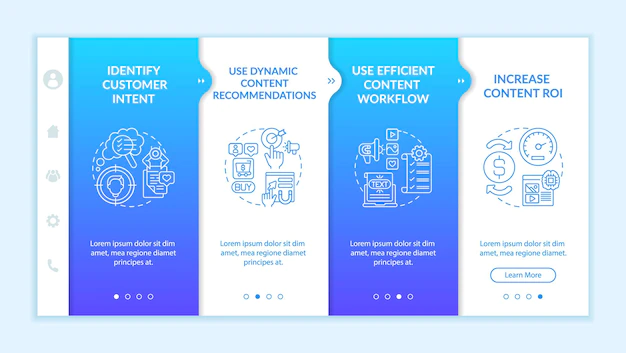Email marketing metrics as a potent instrument for enterprises to establish connections with their target audience, nurture relationships, and drive conversions. Nonetheless, guaranteeing the efficacy of your email campaigns necessitates the meticulous tracking and analysis of pivotal metrics. These metrics offer insightful observations about your campaign’s effectiveness, acting as guiding beacons that direct you towards data-driven decisions focused on honing and enhancing your email marketing strategy. Presented below are the foremost seven email marketing metrics that warrant your attention for achieving triumph:
1. Conversion Rate
The conversion rate is a pivotal measure in email marketing, indicating the percentage of recipients who take a specific action, be it making a purchase, subscribing, or accessing content, in response to an email campaign. This metric acts as a gauge of your emails’ effectiveness in driving tangible outcomes and provides insights into the overall success of your marketing initiatives. Diligently monitoring and optimizing the conversion rate enables businesses to assess the true impact of their campaigns on real-world business goals and empowers them to make informed decisions for further enhancement.
2. Open Rate
In the domain of email marketing, where digital engagements assume utmost significance, the Open Rate emerges as a pivotal metric that sheds light on the initial rapport established between sender and recipient. As we embark on a voyage through the intricacies of efficient communication, we shall uncover the importance of the Open Rate, delving into how it measures the potency of subject lines, the intrigue of pre-header text, and the overall resonance of email content. Join us as we explore the realm of the Open Rate, unraveling its role in fostering engagement and interaction within the dynamic terrain of digital communication.
3. Click-Through Rate (CTR)
The Click-Through Rate (CTR) is a crucial email marketing metric that gauges the level of engagement beyond the initial open. It measures the percentage of recipients who not only open your email but also interact with its content by clicking on links or calls-to-action. A high CTR signifies that your email content and calls-to-action are resonating with your audience, motivating them to take further steps. Monitoring and optimizing the CTR empowers businesses to refine their email content, design, and placement of calls-to-action, ultimately leading to improved engagement and conversion rates.

4. Unsubscribe Rate
The Unsubscribe Rate is a metric that reveals the percentage of recipients who opt out of receiving your emails. While some unsubscribes are common, a persistent high rate may indicate a mismatch between your content and recipient anticipations. Regularly reviewing and refining your email content and frequency can help manage and reduce unsubscribe rates, ensuring your communication remains relevant and engaging to your audience. A high unsubscribe rate can indicate a variety of issues, such as misaligned content with subscriber expectations, excessive email frequency, or failure to cater to changing preferences. It serves as a candid signal that prompts a closer examination of your approach.
5. Revenue per Email
Revenue per Email encapsulates the financial results of your email campaigns by computing the average revenue produced from each email sent. This metric provides a tangible perspective on the effectiveness of your email marketing tactics in boosting real-world sales, conversions, and valuable interactions. Meticulous monitoring and enhancement of Revenue per Email empower businesses to refine their content, calls-to-action, and targeting, ultimately amplifying the financial impact of their email initiatives on overall success. It goes beyond surface-level metrics to demonstrate the real-world outcomes of your email strategies.
6. Bounce Rate
Bounces occur when emails are unsuccessful in delivering to recipients’ inboxes. Bounces are classified as either “soft” (temporary issues) or “hard” (permanent issues). It’s crucial to closely monitor your bounce rate to maintain a clean email list and prevent your emails from being marked as spam. Regularly cleansing and updating your email list helps reduce bounce rates and ensures the delivery of your messages to the intended recipients. A high bounce rate can indicate issues with data quality, list management, or engagement strategies. Bounces are categorized into two types: “soft” and “hard.” Soft bounces are temporary delivery issues, such as a full inbox, while hard bounces are permanent issues like an invalid email address.

7. List Growth Rate
List Growth Rate serves as a crucial gauge, tracking how swiftly your email subscriber list expands. This metric quantifies the speed at which new subscribers join your list, reflecting the efficacy of your efforts in attracting leads and the allure of your email content. A robust growth rate indicates alignment with your target audience, drawing in interested subscribers. Conversely, a plateau or decline may signal the need to Adjust strategies, content quality, or promotional methods. Enhance list growth by creating compelling lead magnets, refining website sign-up forms, and leveraging various avenues such as social media and events.
Conclusion
In conclusion, closely tracking these top seven email marketing metrics equips you with the means to evaluate the success of your campaigns, identify opportunities for improvement, and make insightful choices to refine your email market strategy. Remember, constant watchfulness, analysis, and adaptability are essential for achieving sustainable email marketing success and maximizing your return on investment.










